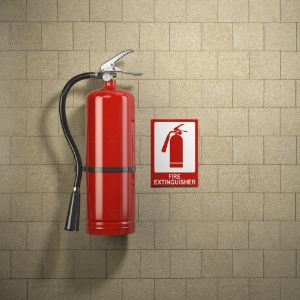Using the Proper Fire Extinguisher for Your Business

A fire in your workplace is one of the most dangerous and terrifying threats you can face. Preparation and planning are crucial to everyone's safety.
One of the most essential elements of any fire-protection strategy is the right fire extinguisher. You don't want your employees risking their lives fighting fires at work, but prompt action with the right equipment can prevent a small fire from turning into a disastrous situation.
Before you can choose the right extinguisher though, you should understand the different types of flames they’re designed to fight. Fires are grouped into these categories:
- Class A: Ordinary combustibles like paper, wood, straw, trash, etc.
- Class B: Flammable liquids, including gasoline, paint, and grease.
- Class C: Electrical fires in live equipment or wiring.
- Class D: Combustible metals like magnesium or titanium.
With that in mind, you'll want to select the type of extinguisher that will work best for the type of fires you're most likely to encounter in your workplace:
- Water: Use a water extinguisher on class A fires only.
- Foam: A foam extinguisher shoots chemical foam to smother flames and can be used on class A and B fires.
- CO2: A CO2 extinguisher can be used to fight class B and C fires.
- Dry Chemical: An extinguisher using dry chemicals or powder can be used on almost any type of fire (except class D, which require special metal or sand extinguishers).
Fire extinguishers should be readily accessible and kept in highly visible locations, especially near exits and stairwells. They should be checked regularly to ensure they're in good working order and employees should be trained in their use. But no employee should put him or herself at risk trying to put out a fire. Emphasize the 30-second rule: If you or an employee can't put out any fire within 30 seconds, get out of your workplace so the fire department can handle it.
This summary is provided as a courtesy to our readers, for further information please consult with your local fire department or visit FEMA.
